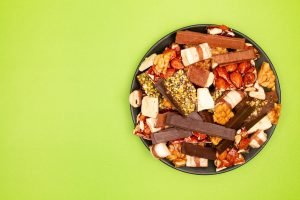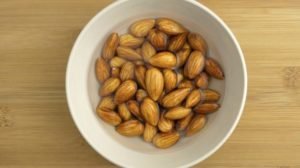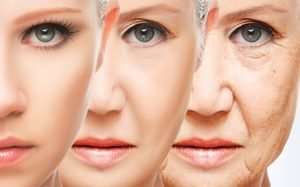9 nutrients that give you energy and keep you young

All nutrients are important, but we know that some play an essential role in energy production and in the prevention of diseases related to aging.
A good diet must provide the essential vitamins and coenzymes to guarantee that the mitochondria generate the energy necessary for the body to function and that they do so without suffering serious deterioration.
In addition to being important to mitochondria , these nutrients participate in many other essential physiological processes for health and wellness.
THE NUTRIENTS OF YOUTH AND VITALITY
There are some 250 billion trillion mitochondria in the body that reproduce and “die” nonstop. Through the control of food intake, we can favor the elimination of bad mitochondria and healthy renewed mitochondria through fasting or a temporary calorie-restricted diet.
If the regular diet provides you with the nutrients that the mitochondria need, they will multiply easily and, above all, they will stay healthy, so they will produce energy efficiently. In addition, the risk of suffering diseases related to poor mitochondrial state is reduced and aging slows down.
1. ASCORBIC ACID (VITAMIN C)
The vitamin C is crucial to defend against bacteria and viruses and to keep mucosal and other tissues in good condition, essential nutrient is one of the main shield against free radicals generated by mitochondrial metabolism. It also protects the cerebral vascular endothelium –prevents strokes– and is necessary to produce neurotransmitters.
- Where found: orange, kiwi, red pepper, kumquat, parsley, gooseberry, kale, papaya, and strawberry. Taking from 2 to 4 daily servings of fruit, the minimum contribution is guaranteed.
2. VITAMIN B1 (THIAMINE)
It has attracted the attention of researchers because it is an essential cofactor in regulating the activity of various mitochondrial enzymes and, therefore, improves their function and efficiency in energy production. On the other hand, it is known as the “character vitamin” , due to its effects on mental health –it has antidepressant properties– and learning.
- Where it is found: in beans, lentils, macadamias and nuts in general, asparagus, green peas, spinach and soy and their derived foods.
3. VITAMIN B2 (RIBOFLAVIN)
Also known as riboflavin, it is a precursor to essential cofactors in energy production. On the other hand, its therapeutic utility is being studied in the treatment of headache and Parkinson’s disease, also due to its participation in processes carried out by mitochondria.
It also strengthens muscles, reduces fatigue , promotes exercise tolerance, psychomotor development and intellectual performance.
- Where found: In spinach and other green leafy vegetables, almonds, dried tomatoes, quinoa, lentils, mushrooms, sesame seeds, beans, and avocados.
4. VITAMIN B9 (FOLIC ACID)
It has been observed that a deficiency of this vitamin causes a reduction in the generation of energy by the mitochondria. It also affects the correct synthesis of DNA in new cells.
On the other hand, it is an essential vitamin for the correct development of the nervous system during the fetal stage and the first years of life.
- Where found: lamb’s lettuce, lettuce, beans, spinach, beets, Brussels sprouts, broccoli, avocados, nuts, and other nuts.
5. VITAMIN B3 (NIACIN)
Dr. Anu Suomalainen Wartiovaara, from the University of Helsinki (Finland), proposes the use of niacin supplements to treat mitochondrial diseases that affect muscles.
In addition, this nutrient protects against the toxic effects of mercury, produces a calming effect, and has been tested for its ability to delay aging in animal studies.
- Where found: green peas, peanuts, beans, soybeans, avocados, brown rice and whole wheat, mushrooms, potatoes.
6. VITAMIN B5 (PANTOTHENIC ACID)
Its deficiency affects the processes of energy production from fatty acids. It also prevents insomnia, memory loss and depression .
- Where found: sunflower seeds, walnuts, avocado, portobellos, lentils, corn, peas, mushrooms, cauliflower.
7. COENZYME Q10 (UBIQUINONE)
The coenzyme Q10 important electron carrier in the respiratory chain of the cell. Its deficiency impairs the production of energy in the mitochondria.
It also protects the heart and is beneficial in diseases such as myoclonic epilepsy, migraine, chronic fatigue, cancer, parkinson’s, fibromyalgia or depression. The body produces coenzyme Q10, but this capacity decreases over the years.
- Where found: green leafy vegetables like spinach, broccoli and cauliflower, peanuts, sunflower seeds, soybeans.
8. L-ARGININE
This amino acid has been proven effective in reducing pain crises in certain muscle pathologies of mitochondrial origin. Moreover, it improves blood circulation in the brain .
- Where found: pumpkin and sesame seeds, soy products, peanuts, chickpeas, lentils, spinach, spirulina.
9. POLYSACCHARIDES
According to Dr. Zebo Huang of Guangdong Pharmaceutical University, polysaccharides counteract the negative effects of free radicals on mitochondrial function.
They also collaborate with the immune system and the pathological accumulation of proteins, as occurs in neurological degenerative diseases such as Alzheimer’s.
- Where they are found: Polysaccharides are found in many vegetables and mushrooms. Those of reishi mushrooms and bridal veil, the polysaccharides of Angelica sinensis (an important plant of Chinese herbal medicine, also known as dong quai) have been especially beneficial.





